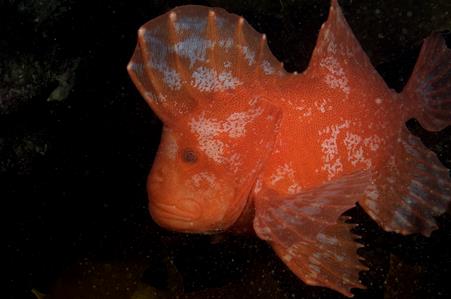General Description
Striking red or orange fishes with a compressed body, a large head and large rounded fins; dorsal fin continuous with high rounded lobes; pelvic fins below pectoral fins, both rounded; scales absent, body covered in fine velvety skin. Bright mottled orange, red or brown. Juveniles very pale with red spots. To 46 cm.
Biology
Although relatively common in some areas, the Red Velvetfish is surprisingly well-camouflaged amongst kelp and other macroalgae. These ambush predators feed mostly on crustaceans such as crabs and shrimps. The fin spines are venomous and can inflict an excruciatingly painful sting.
Habitat
Sheltered rocky reefs covered in kelp and other macroalgae, in depths of 1-55 m.
Reefs
Distribution guide
Southern Australia.
Species Group
Depth
Shallow (1-30 m)
Deep ( > 30 m)
Water Column
Max Size
46 cm
Harmful
Venomous spines can inflict mild to severe pain.
Commercial Species
No
Global Dispersal
Native to Australia
Conservation Status
- DSE Advisory List : Not listed
- EPBC Act 1999 : Not listed
- IUCN Red List : Not listed






